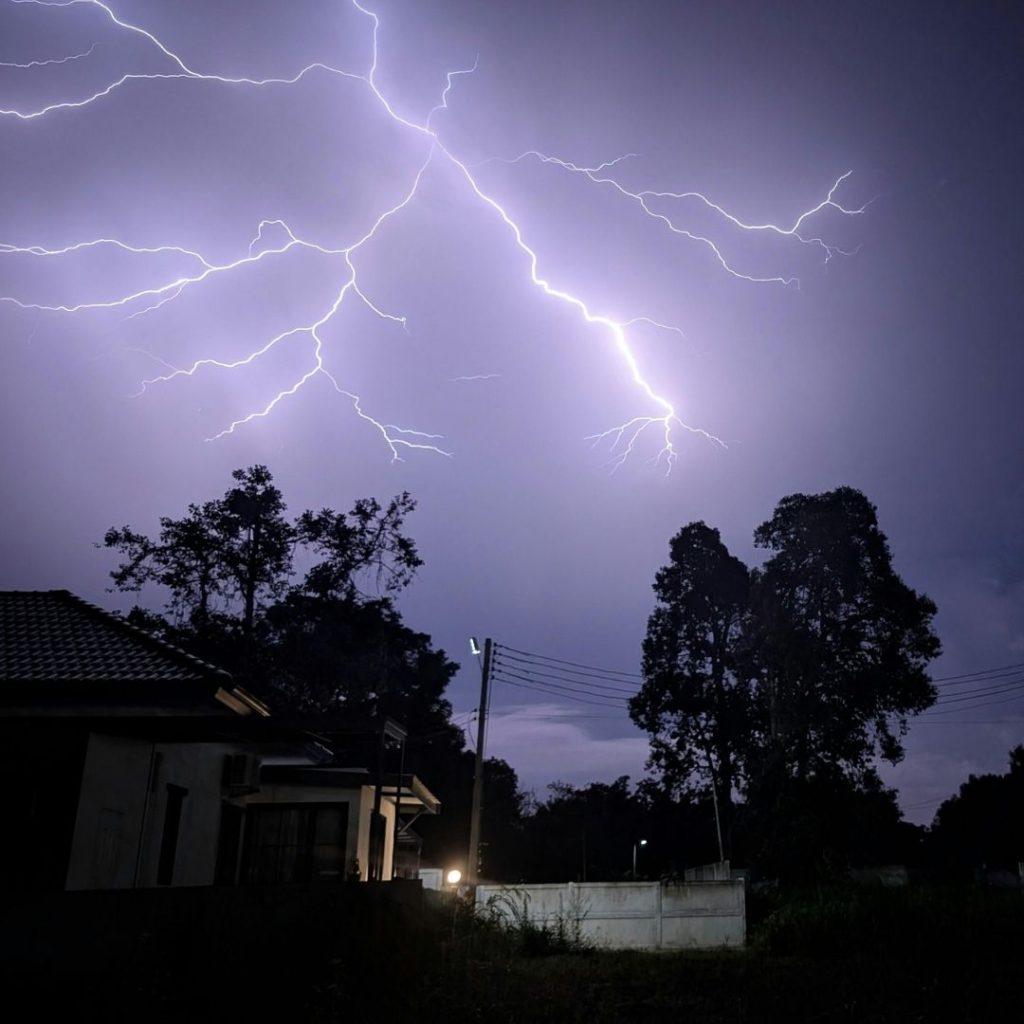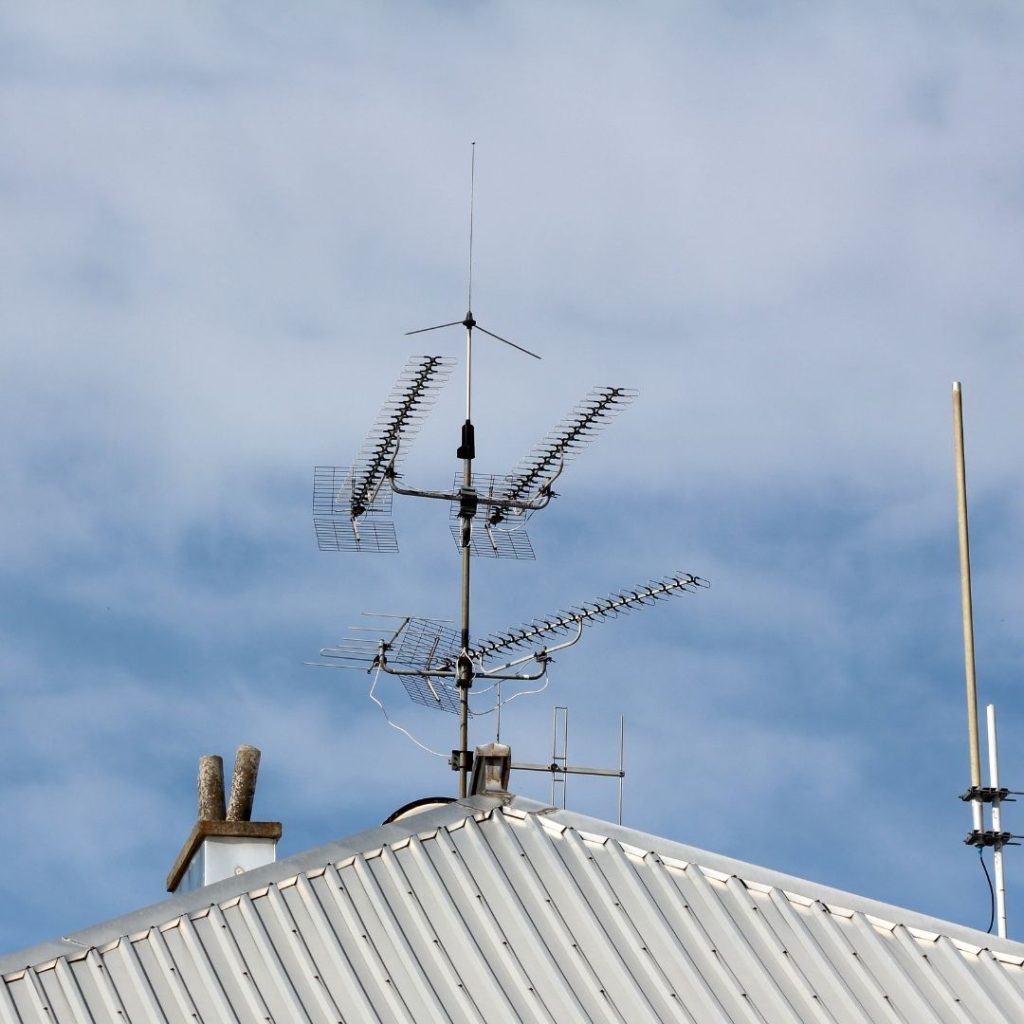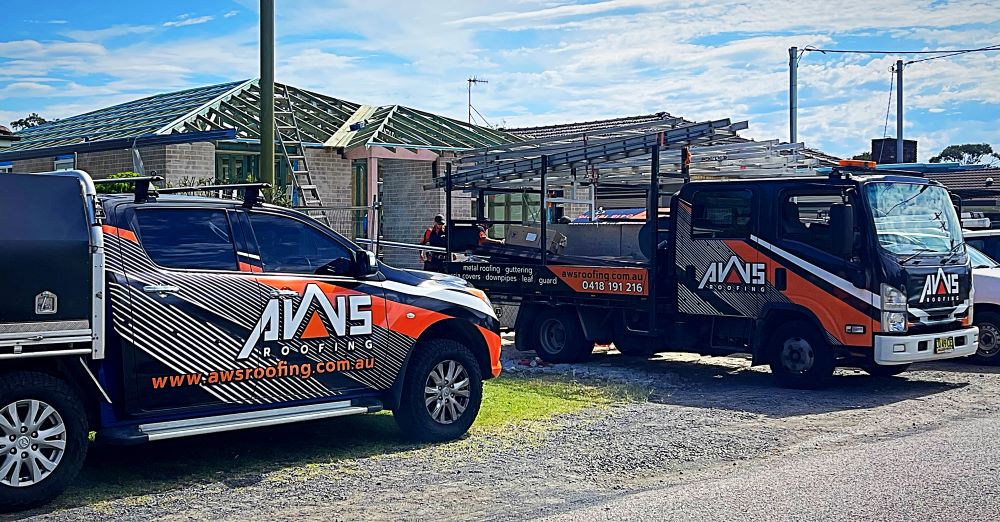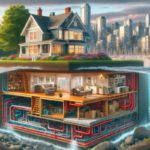Metal roofing is celebrated as one of the most resilient and enduring roofing choices available in Australia. Its remarkable strength, long-lasting durability, and impressive energy efficiency are widely recognised features. However, a prevalent concern among homeowners is — do metal roofs attract lightning?
As increasing numbers of homeowners are choosing to install Starlink dishes and various types of aerial devices, the apprehension regarding lightning strikes has similarly grown. In this exploration, we will uncover the truths surrounding this matter, demonstrating why metal roofing, in conjunction with antennas and satellite systems, is frequently safer than many individuals assume it to be.

Do Metal Roofs Actually Attract Lightning Strikes?
Contrary to the widespread notion that metal roofs attract lightning, the reality is quite different. A metal roof does not attract lightning. Essentially, lightning is drawn to the highest point in any given landscape, and its attraction is not determined by the roofing material itself. Lightning follows the path of least resistance to reach the ground; therefore, it typically targets taller structures such as trees, telephone poles, or antennas rather than the roofing material itself.
In the unfortunate event that a home with a metal roof is struck by lightning, the reassuring aspect is that metal can disperse energy in a secure manner. Unlike roofing materials such as tiles or timber, metal is not easily ignited or combustible. If lightning were to strike, the electrical charge would quickly spread across the roof's surface and harmlessly dissipate into the ground, particularly when the grounding system of the building has been correctly installed.
In conclusion, choosing a Colorbond® roof does not heighten the likelihood of your home being struck by lightning. However, in the event that a strike occurs, a metal roof is undoubtedly one of the safest options available, providing homeowners with considerable peace of mind.
Do Aerials or Starlink Dishes Increase Lightning Strike Risk?
Similar to metal roofs, aerials, antennas, and Starlink dishes do not inherently attract lightning merely by their presence. Rather, lightning is typically attracted to height and isolation, rather than specifically to the metal components of these devices.
If an aerial or dish is the highest point on your property, it may become the most probable target for a lightning strike. This situation arises from its elevated position rather than its metallic composition. Therefore, it is essential to understand that the risk of a lightning strike is primarily dependent on location rather than the materials utilised in construction.
To enhance safety, consider implementing these best practices:
- Ensure that the dish or antenna is professionally installed and grounded following the AS/NZS 1768 lightning protection standards.
- Bonding and grounding the system is crucial, as this enables any electrical surge to safely travel to the earth, minimising the risk of damage to your equipment or property.
- Avoid using isolated, ungrounded poles that extend significantly above the roofline, as these pose a greater risk of lightning strikes.
When installed correctly, a Starlink dish or roof-mounted aerial on a Colorbond® roof remains completely safe, even during severe electrical storms.

Exploring the Safety Benefits of Metal Roofing Materials
Beyond the critical factor of lightning safety, metal roofing offers a wide array of inherent protective features that establish it as a superior choice for homeowners:
- Fire Resistance: Metal is fundamentally non-combustible, making it an excellent choice for areas prone to bushfires.
- Storm Durability: Metal roofs are engineered to withstand hail, intense winds, and heavy rainfall significantly better than many traditional roofing materials.
- Corrosion Protection: Colorbond® coatings provide exceptional resistance against rust, even in coastal regions where salty air can pose a challenge.
- Energy Efficiency: Reflective coatings on metal roofs assist in reducing heat absorption during the hot summer months, which can lead to lower energy bills.
- Structural Lightness: Metal roofing is lighter than tiles, which alleviates stress on the roof frame and enhances overall structural integrity.
Essential Steps for Maintaining Roof Safety and Efficiency
To ensure complete reassurance regarding the safety of your roof and any mounted equipment, conducting regular inspections is vital:
- After storm events, inspect flashings, fixings, and sealants to verify they remain intact and functional.
- Keep gutters and valleys free from debris to prevent overflow and potential water damage to your property.
- Confirm that any antenna installations are properly grounded to minimise risk and ensure safety.
AWS Roofing provides expert inspections and roof replacements across the Central Coast, Newcastle, and Hunter regions, ensuring that each roof performs safely and efficiently while delivering maximum protection to your home.

Key Takeaways on Metal Roof Safety and Performance
A metal roof does not attract lightning; in fact, it plays a significant role in protecting your home from lightning strikes. When paired with professional installation and proper grounding of any roof-mounted equipment, a Colorbond® metal roof emerges as one of the safest, most dependable, and longest-lasting roofing systems available in Australia.
If you require expert assistance for metal roofing installation or replacement, reach out to AWS Roofing, trusted specialists in durable and compliant roofing systems throughout NSW.
Do Metal Roofs Attract Lightning? (And Aerials or Starlink Dishes)
The Article: Do Metal Roofs Attract Lightning? A Look at Aerials and Starlink first appeared on https://writebuff.com
The Article Metal Roofs and Lightning: Insights on Aerials and Starlink Was Found On https://limitsofstrategy.com

